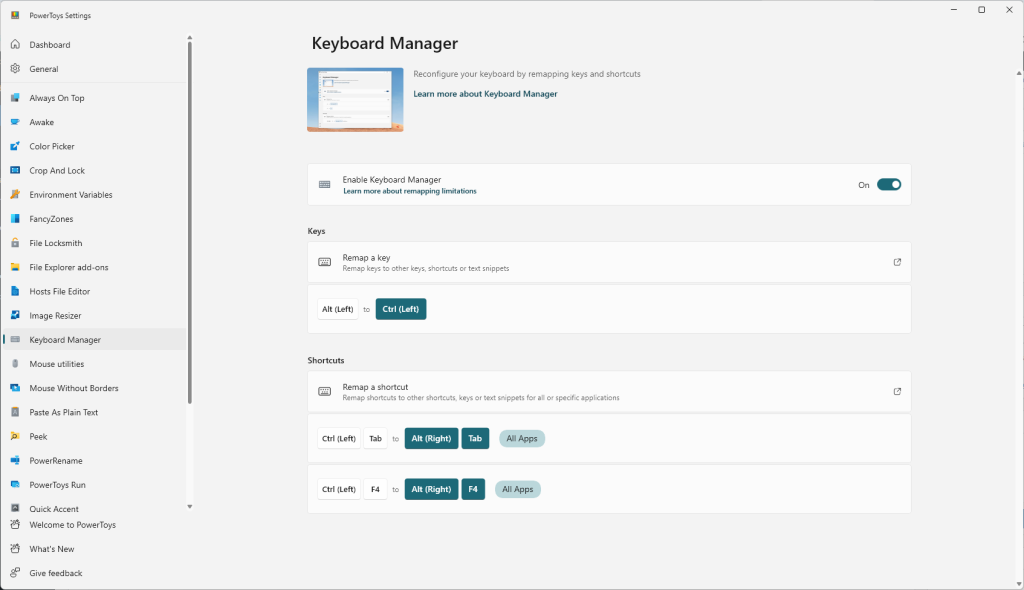As a dedicated macOS user, I often find myself missing the convenience of having a Command key located near my thumb for common shortcuts when using Windows. In the standard Windows keyboard layout, the key that occupies the same position as the Command key on macOS is the Alt key. However, the equivalent key on Windows for the Command key on macOS is the Ctrl key. For example, while copying and pasting on macOS is done using Command-C and Command-V, the corresponding shortcuts on Windows are Ctrl-C and Ctrl-V. To bridge this gap and make the Windows experience more user-friendly for macOS users, one solution is to remap the left Alt key to function as the left Ctrl key on Windows. This article will introduce a method to achieve this key mapping.
To remap the keys, we will make use of a software tool called PowerToys developed by Microsoft. Using a software tool from Microsoft adds an extra layer of reliability and trust, as we can be confident in the quality and security of the software provided by the Windows manufacturer. The first step is to download and install the PowerToys software, which serves as a command center for various Windows customization options.
The crucial step in this process is configuring the remapping of the left Alt key to the left Ctrl key.

- Launch PowerToys Keyboard Manager and select the option to add a key remapping.
- Choose “Alt (Left)” as the key to remap and set it to “Ctrl (Left).” This remapping will effectively make the left Alt key function as the left Ctrl key.
However, it’s important to note that after this remapping, certain commands that utilize the Alt key, such as Alt-Tab for application switching, will no longer work as expected. To address this issue, we need to make an additional configuration.
- In PowerToys Keyboard Manager, add shortcuts for “Ctrl (Left) + ” to “Alt (Right) + “.
- For example, you can set “Ctrl (Left) + Tab => Alt (Right) + Tab” for application window switching and “Ctrl (Left) + F4 => Alt (Right) + F4” for closing applications.
The reason we remap “Ctrl (Left)” instead of “Alt (Left)” is that we have already mapped the left Alt key to the left Ctrl function. When we press the physical left Alt key, the operating system and applications will recognize it as the left Ctrl key. As for the right Alt key, it remains unchanged and functions as an Alt key.
By following this method, we make the left Alt key on Windows behave similarly to the left Command key on macOS, providing familiarity and convenience for macOS users. At the same time, essential Windows system-level shortcuts like Alt-Tab will continue to function as expected. This key mapping adjustment ensures a more user-friendly experience for macOS users transitioning to Windows.